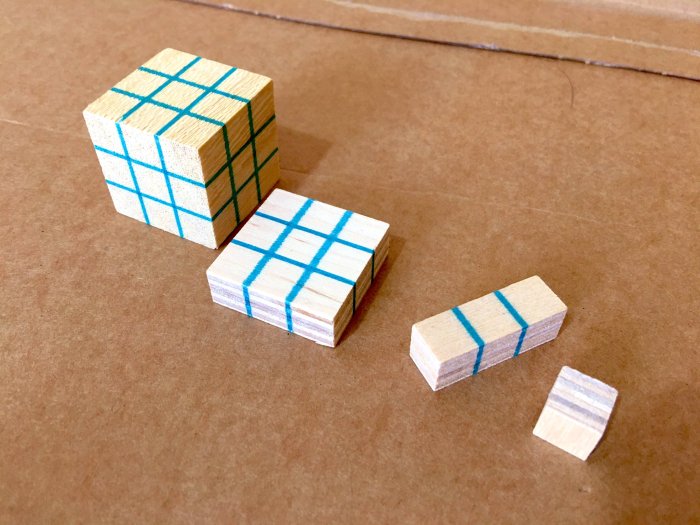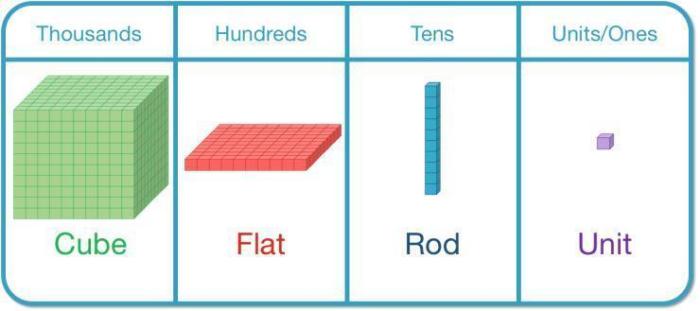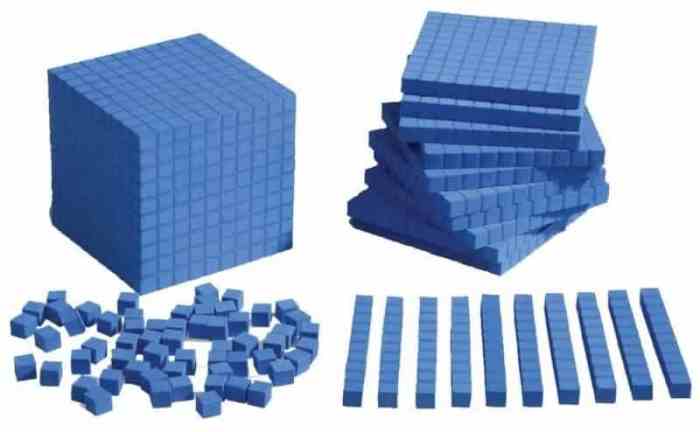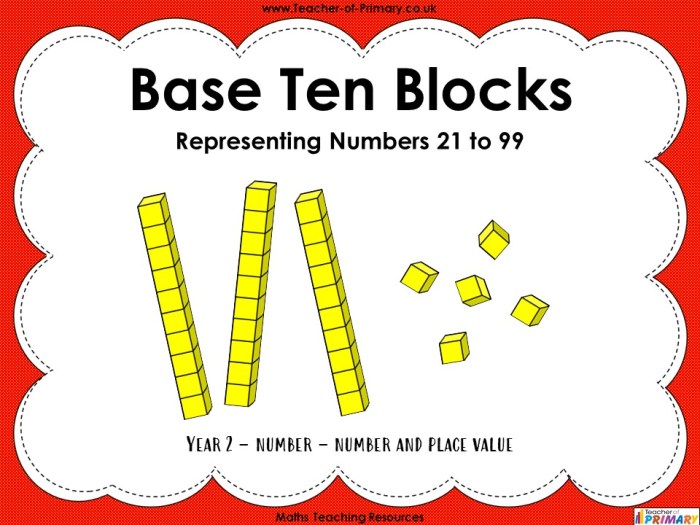Mia uses 3 different base-ten blocks – Mia’s employment of three distinct base-ten blocks embarks on a captivating mathematical journey, illuminating the intricacies of place value, operations, and problem-solving. These versatile blocks serve as tangible representations of numerical concepts, empowering Mia to visualize and manipulate mathematical ideas with remarkable dexterity.
Through the lens of Mia’s experiences, we delve into the fundamental principles of base-ten numeration, exploring the significance of each block’s value and its role in representing powers of ten. Her intuitive understanding of place value becomes evident as she deftly constructs three-digit numbers using these blocks, demonstrating her ability to discern the relative magnitude of each digit.
Mia’s Base-Ten Block Collection: Mia Uses 3 Different Base-ten Blocks

Mia has three different types of base-ten blocks: ones, tens, and hundreds. Ones are small cubes with a value of one. Tens are long rods with a value of ten. Hundreds are flat squares with a value of one hundred.
These blocks help Mia visualize and understand the concept of place value. Each block represents a different power of ten. Ones represent 10^0, tens represent 10^1, and hundreds represent 10^2.
Mia’s Understanding of Place Value

To represent the number 345, Mia would use three hundreds, four tens, and five ones. This demonstrates her understanding of place value because she correctly assigns the correct value to each block based on its position.
Operations with Base-Ten Blocks
Mia can use the blocks to perform addition and subtraction. For example, to add 23 and 45, she would use two hundreds, three tens, and three ones for 23, and four tens and five ones for 45. She would then combine the blocks to get six tens and eight ones, which represents the sum of 68.
Mia’s Math Problem-Solving Skills

Mia was asked to find the difference between 567 and 243. She used the blocks to represent each number and then subtracted the blocks for 243 from the blocks for 567. She found that the difference was three hundreds and two tens, which represents the number 320.
Extensions and Applications

Mia can use the base-ten blocks to enhance her math learning in many ways. She can use them to explore different number bases, such as base five or base two. She can also use them to learn about fractions and decimals.
The base-ten blocks are a valuable tool for Mia’s math education. They help her visualize and understand mathematical concepts, and they can be used to solve a variety of math problems.
Frequently Asked Questions
What are the three types of base-ten blocks that Mia uses?
Mia’s collection comprises unit cubes, tens rods, and hundreds flats, representing the values of one, ten, and one hundred, respectively.
How do base-ten blocks help Mia understand place value?
By physically constructing numbers using these blocks, Mia can visualize the relative magnitude of each digit and comprehend the concept of place value.
Can Mia use base-ten blocks to perform operations other than addition and subtraction?
While the Artikel primarily focuses on addition and subtraction, base-ten blocks can also be employed for multiplication and division operations, fostering a deeper understanding of numerical relationships.